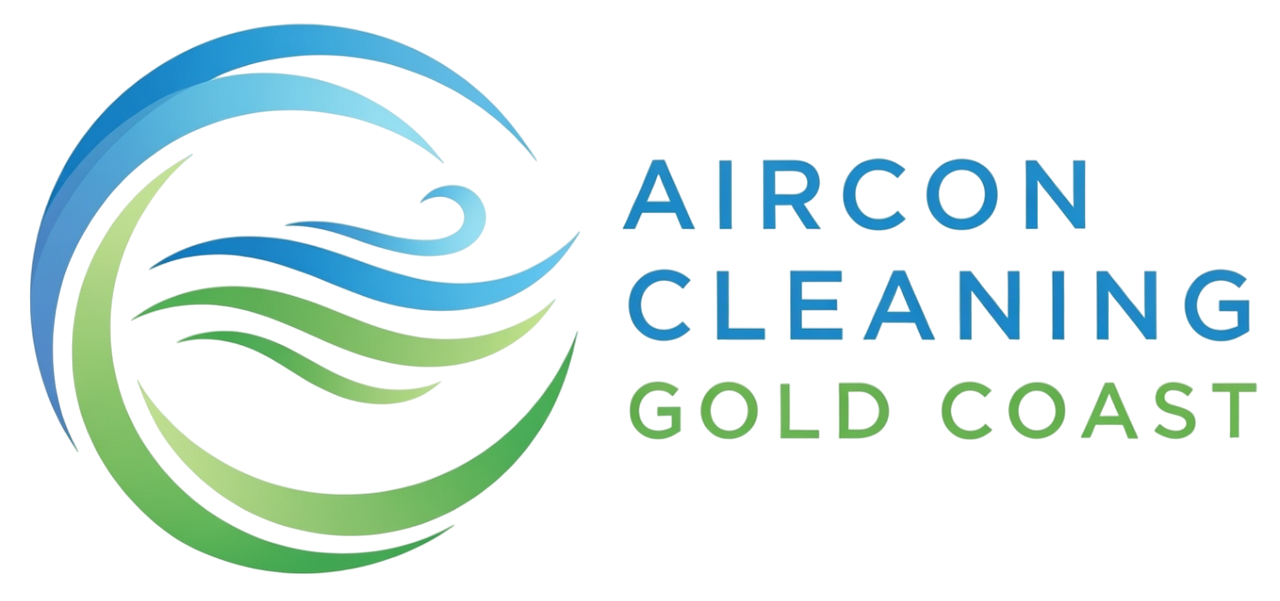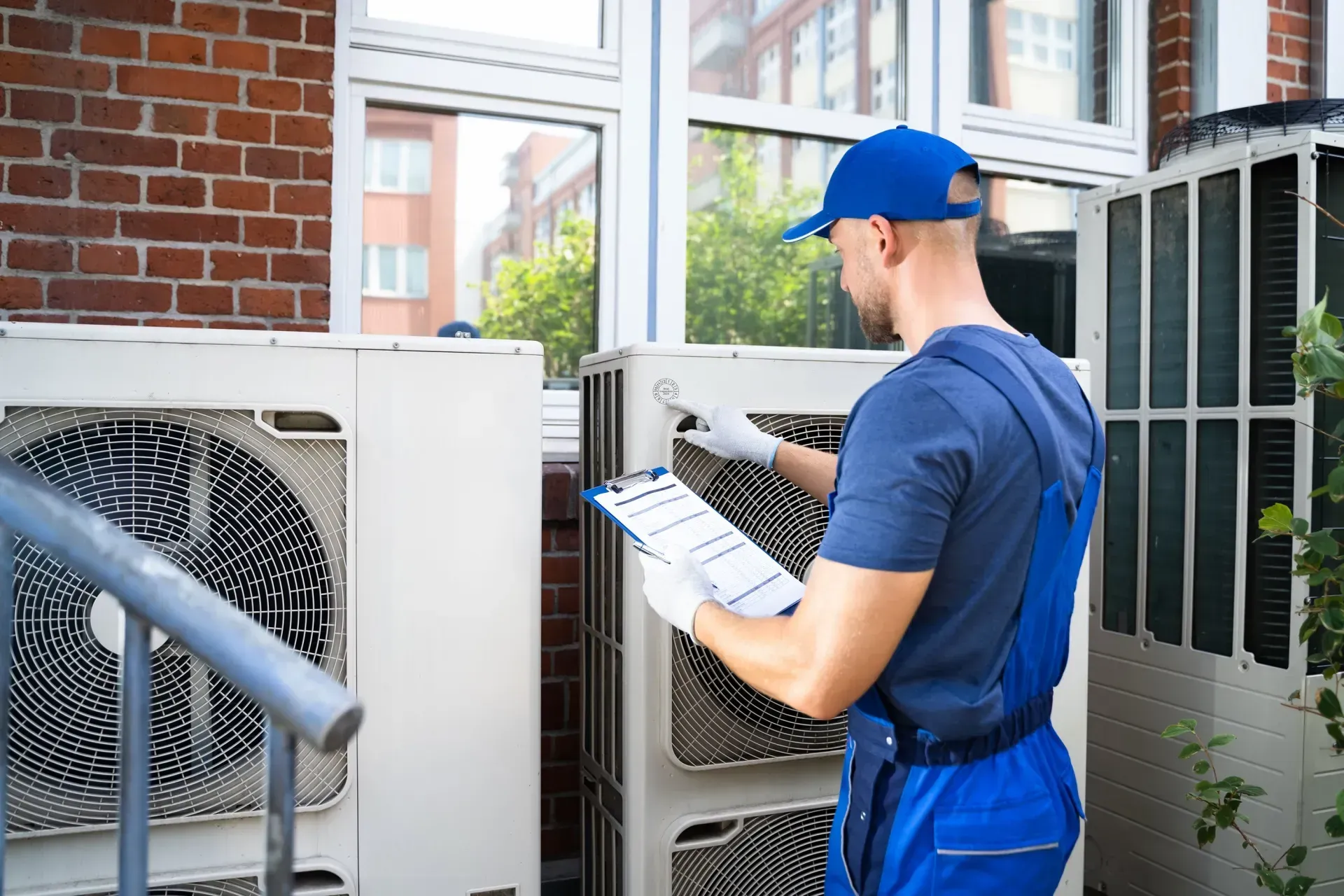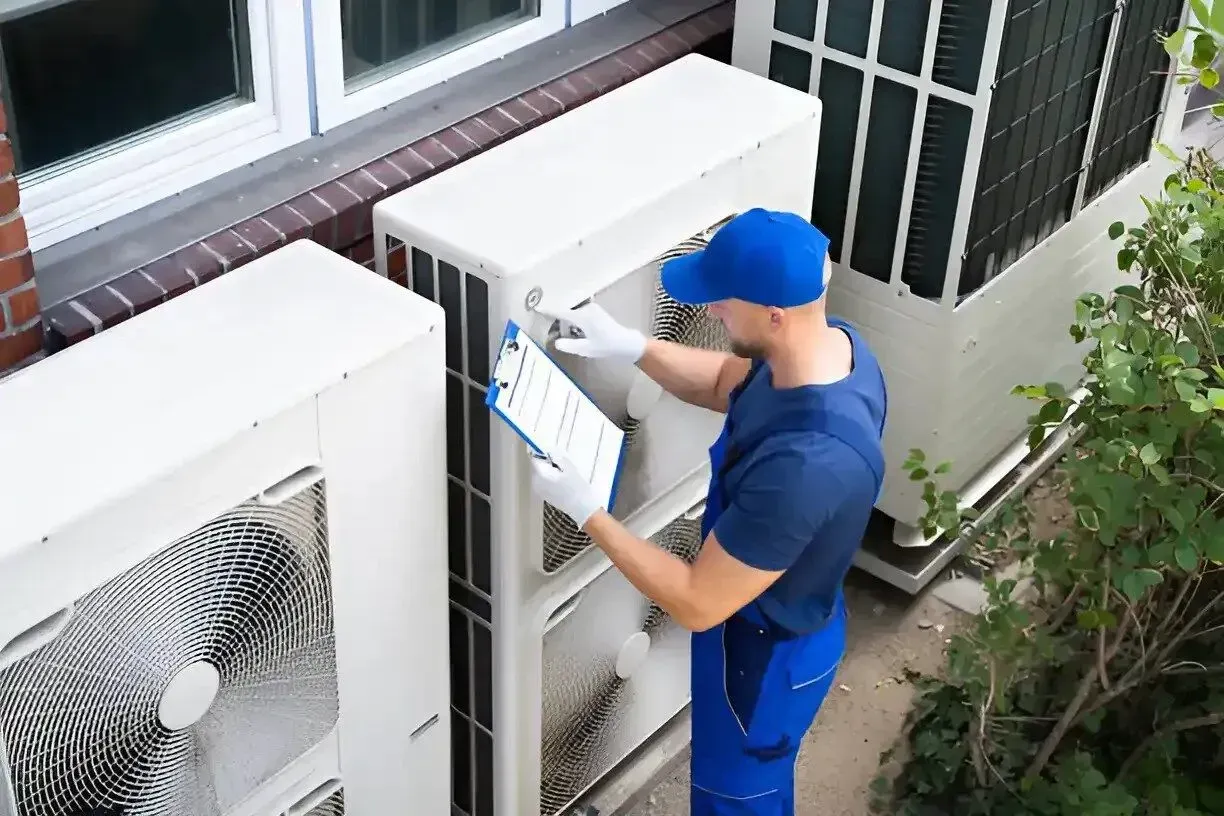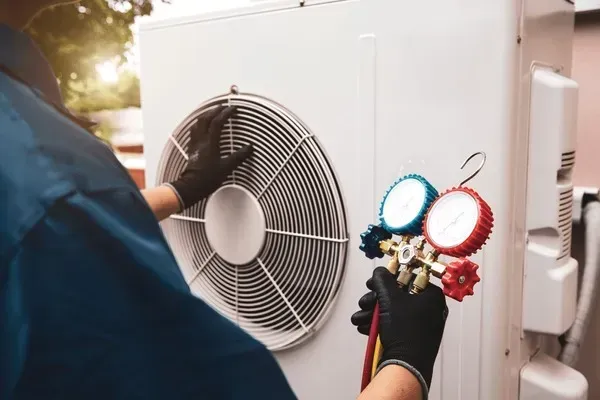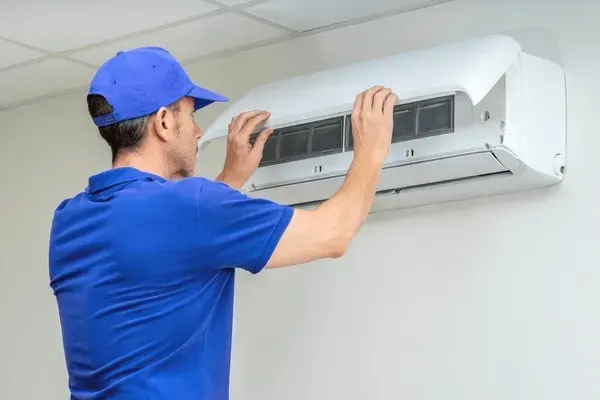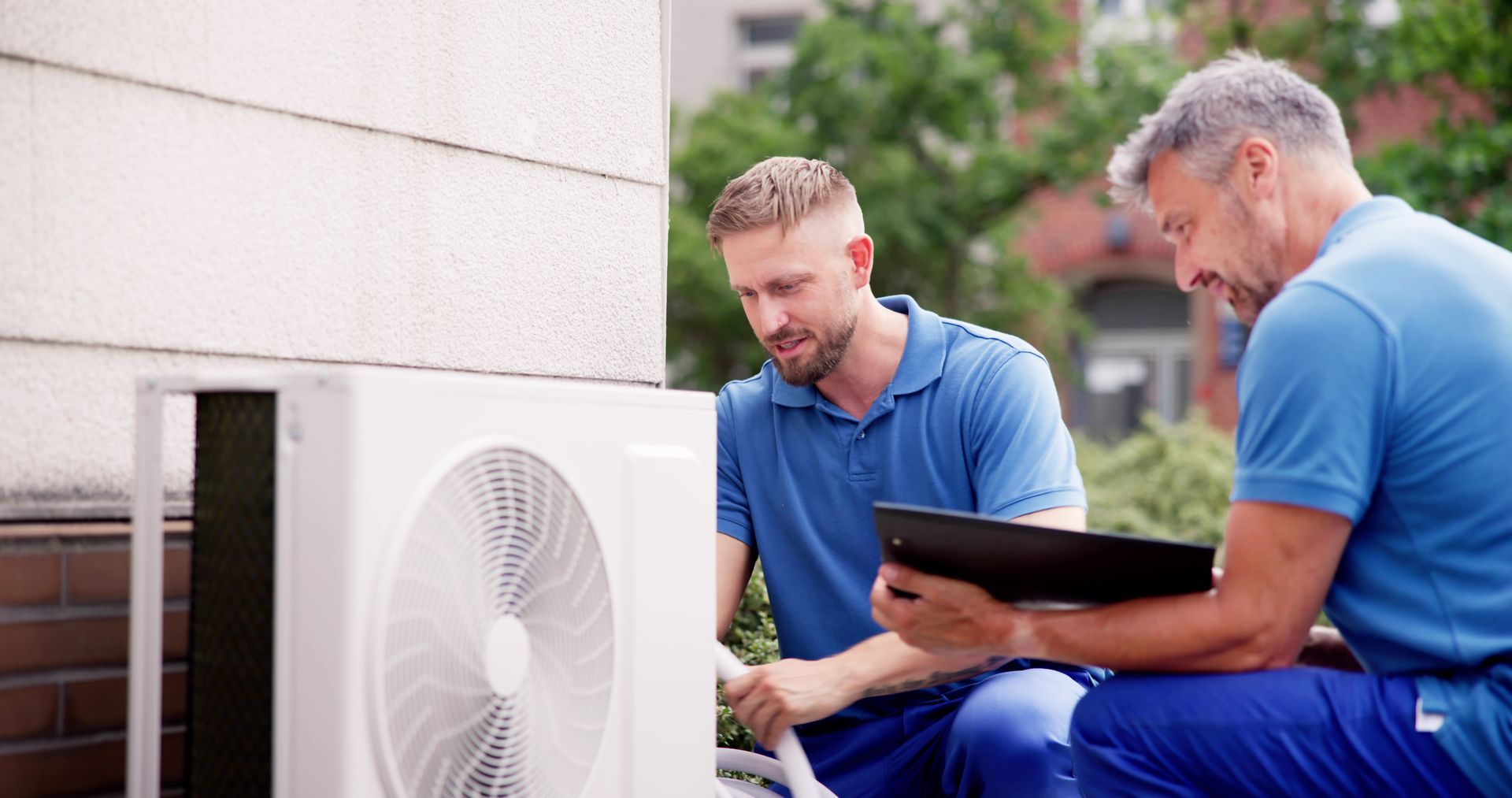Aircon Cleaning Gold Coast
How to Clean a Split System Air Conditioner: A Step-by-Step Guide
When the Gold Coast hot weather hits, your split system air conditioner becomes your best friend. But is the air it's blowing as clean as it could be? Over time, dust, grime, and even mould can build up inside your indoor unit, reducing its efficiency and negatively impacting your indoor air quality. A dirty air conditioner has to work harder, which can lead to higher energy bills and a shorter lifespan for the unit.
Learning how to clean split system air conditioner components yourself is an excellent way to perform regular maintenance and keep your unit in top shape between professional visits. This guide will walk you through a safe and effective cleaning process for both the indoor and outdoor units.
However, while DIY cleaning is great for surface-level upkeep, it's important to know its limits. For a truly deep clean that sanitises the internal components, a professional service is essential.
Is Your Aircon Due for a Deep Clean? Contact Aircon Cleaning Gold Coast Today!
Safety First: Preparing for Your Air Conditioner Cleaning
Before you begin any cleaning, safety is paramount. You are dealing with an electrical appliance, so take the following precautions without fail.
Disconnect the Power
Go to your home's circuit breaker box and switch off the power to both the indoor and outdoor units of your split air conditioner. This is the most critical step to prevent electric shock. Do not just turn it off with the remote; cut the power at the power source.
Consult Your Manual
Every air conditioner is slightly different. Refer to your instruction manual for specific details on how to open the front panel and safely access the air filters.
Part 1: How to Clean the Indoor Unit of Your Split System
The indoor unit is where the cooling process happens and where most of the dust and grime that affects your health accumulates. Regular cleaning of this unit is vital.
Step 1: Cleaning the Air Filters
The air filters are your first line of defence. They trap airborne dust and particles, but they clog up quickly. Dirty filters restrict air flow, forcing your air conditioner to work harder.
Access the Filters
Gently lift the front panel of the indoor unit. It should click open, revealing the mesh air filters. Carefully slide or unclip them from their position.
Remove Loose Dust
Take the filters outside. You can use a vacuum cleaner with a soft brush attachment to remove the bulk of the loose dust. Alternatively, a soft brush can be used to gently wipe the dust away.
Wash the Filters
Prepare a solution of lukewarm water and a mild detergent. Submerge the filters and gently wash them with a soft brush or cloth. Avoid scrubbing too hard, as you could damage the delicate mesh.
Rinse and Air Dry
Rinse the filters thoroughly under clean, running water until all soap residue is gone. Shake off the excess water and let them air dry completely in a shaded spot. Do not place them in direct sunlight or use a heat source, as this can damage them. The filters must be completely dry before you put them back.
Reinstall
Once dry, slide the clean filters back into their original position inside the indoor unit and securely close the front panel.
Step 2: Cleaning the Cooling Fins and Coils
The thin metallic blades you see behind the filters are the cooling fins. They are part of the evaporator coil and are crucial for the heat exchange process.
Use a Soft Brush
With the filters removed, use a soft brush to very gently brush any dust off the cooling fins. You can also use the brush attachment on your vacuum cleaner. Be extremely careful, as these fins are delicate and bend easily.
Apply a No-Rinse Coil Cleaner
For a deeper clean, you can purchase a can of no rinse evaporator spray from a hardware store. Spray the cleaner evenly across the coils as directed on the can. This foam will drip down into the drain pan, taking dirt with it and helping to clean the coils.
Step 3: Cleaning and Flushing the Drain Line
Your split air conditioner removes moisture from the air, which collects in a pan and exits through a drain line. This drain can become clogged with sludge and mould.
Locate the Drain Line
The drain line is usually a small PVC pipe that runs from the indoor unit to the outside.
Flush the Line
You can use a specialised pressurized flush kit or a wet/dry vacuum to clear out any blockages in the drain lines. A gentle flush can dislodge buildup and ensure dirty water can escape properly. Some people add a small amount of diluted vinegar or tea tree oil to help kill mould.
Part 2: How to Clean the Outdoor Unit (Condenser)
The outdoor unit works hard to release the heat captured from inside your home. Keeping it clean is vital to ensure your system air conditioner can run efficiently.
Is it okay to spray water on your air conditioner?
Yes, it is generally safe to gently spray water on the exterior of your outdoor unit for cleaning, provided the power source is completely disconnected at the circuit breaker. Do not use a high-pressure washer, as it can easily damage the delicate condenser fins.
Step 1: Clear Debris
Start by removing any leaves, twigs, grass clippings, and other debris from around and on top of the outdoor unit. Ensure there is at least 60cm of clear space around the entire unit for proper air circulation.
Step 2: Clean the Condenser Fins
The fins on outdoor units are what dissipate the heat.
Gentle Brushing
Use a soft brush to remove any visible dirt and cobwebs from the outside of the fins.
Hose Down
Take a garden hose with a gentle, pressurized nozzle (spray, not jet) and rinse the fins from the inside out, if you can access them. If not, spraying from the outside is okay. This will wash away any embedded dust and grime.
Straighten Fins
If you notice any bent condenser fins, you can carefully straighten them using a "fin comb," available at specialty stores.
Step 3: Clean the Unit's Exterior
Once the fins are clean, wipe down the exterior casing of the outdoor unit with a damp or dry cloth. Check the base pad to ensure it's level and that the unit is stable.
When a DIY Clean Isn't Enough: The Case for Professional Service
While the steps above are excellent for maintenance, they don't reach the internal components of the indoor unit, like the fan barrel and the areas behind the coils. This is where mould and bacteria thrive, hidden from view.
A professional service from Aircon Cleaning Gold Coast uses a specialised cleaning bag and pressurised flush kit to perform a deep, hygienic clean of the entire indoor unit. We remove the covers to access and sanitise the fan, coils, and drain, ensuring your air conditioner is not just blowing cool air, but truly clean air.
If your split system air conditioner has a persistent musty smell, poor air flow, or hasn't been serviced in over a year, a DIY clean is not enough. Protect your family's health and your investment by booking a professional.
Book Your Professional Split System Clean and Breathe the Difference!
Frequently Asked Questions
How to clean the split air conditioner?
The main DIY tasks are to wash the air filters every 1-3 months and clean the outdoor unit of debris. First, turn off the power at the circuit breaker. Remove the filters from the indoor unit, wash them with mild soap and water, let them air dry completely, and reinstall. For the outdoor unit, clear away any leaves and gently hose down the fins.
How to clean the inside of a split unit?
Cleaning the deep inside of a split air conditioner, such as the fan barrel and evaporator coil, requires a professional service. Professionals use a special cleaning bag to catch water and a low-pressure cleaner to flush the internal components without damaging them. For DIY maintenance, you can use a no rinse evaporator spray on the coils after you have removed and cleaned the air filter.
How to clean split AC outdoor unit with water in Australia?
First, ensure the air conditioner is disconnected from its power source via the circuit breaker. Remove any large debris like leaves and twigs from the unit. Using a garden hose with a spray nozzle (not a high-pressure jet), gently spray water through the condenser fins from the outside to wash away dust and dirt. Allow it to air dry before restoring power.
